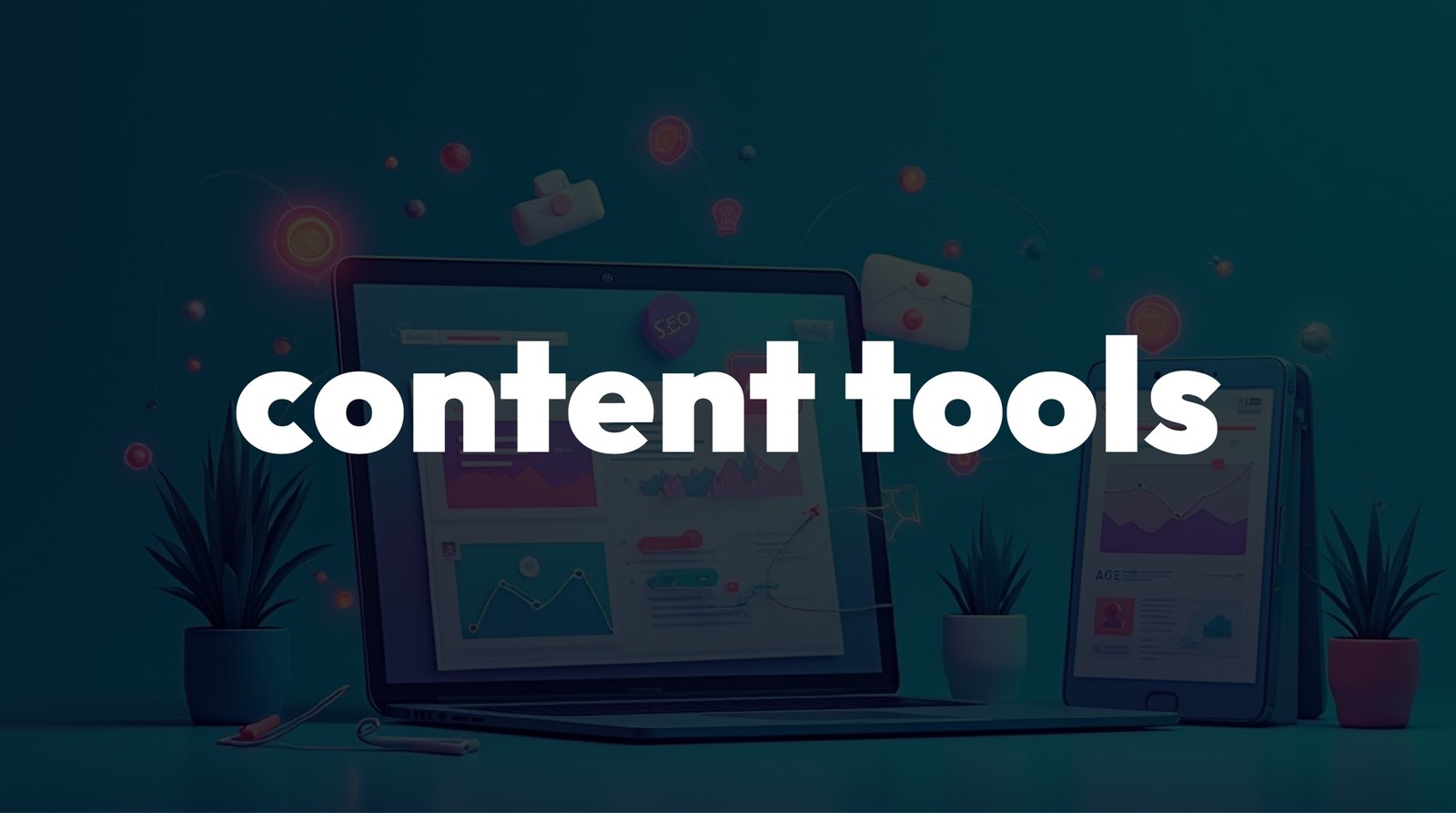In today’s digital world, good content is the key to success online. Using the right content tools can help you work faster, be more creative, and get better results, whether you’re a blogger, marketer, or business owner. Modern tools make sure your content not only ranks well but also keeps readers interested. They do this by doing keyword research, optimizing content, and tracking performance.
What Are Tools for Content?
Digital platforms, apps, or software that help creators plan, write, improve, publish, and measure content are called content tools. They make it easier to write content and make sure that it is SEO-friendly, interesting, and based on data.
Here are some examples of common content tools:
- Tools for finding keywords (Ahrefs, SEMrush, Ubersuggest)
- Grammarly, Hemingway, and QuillBot are some writing and editing tools.
- Platforms for optimizing content (Surfer SEO, Clearscope)
- Canva and Adobe Spark are two graphic design tools.
- Apps for scheduling social media posts (Buffer, Hootsuite)
Why are tools for making content important?
There are millions of articles published every day, so you need a plan to stand out. Here’s why tools for making content are important:
- Increase productivity by automating things like keyword research, scheduling content, and keeping track of analytics.
- Boost your SEO by using keyword optimization tools to get higher rankings on Google.
- Make it easier to read: Grammar and style checkers make sure your writing is easy to understand.
- Get people more involved: Visual tools help make graphics and infographics that stand out.
- Analytics tools help you make decisions based on data by showing you what works and what doesn’t.
What kinds of content tools you should use
1. Tools for finding keywords
Finding the right keywords is the most important part of SEO. Google Keyword Planner, SEMrush, and Ahrefs are some tools that can help you find search volumes, keyword difficulty, and related LSI keywords.
2. Tools for writing and editing content
To write well, you need to be clear and correct. Grammarly, Hemingway Editor, and ProWritingAid make your writing better by checking for grammar mistakes and making sure it is easy to read.
3. Tools for optimizing content
Surfer SEO and Clearscope are two examples of platforms that look at the top-ranking pages and suggest LSI keywords, headings, and content length to help them rank higher.
4. Tools for graphics and pictures
Visuals make people 94% more likely to pay attention. You can make infographics, social media graphics, and banners quickly with tools like Canva and Visme.
5. Tools for social media and scheduling
In digital marketing, consistency is very important. You can use tools like Buffer, Hootsuite, and Later to plan posts for multiple platforms.
6. Tools for tracking performance and analytics
Google Analytics, Hotjar, and BuzzSumo are examples of tools that measure engagement, keep track of conversions, and find popular topics.
How to Use Content Tools the Right Way
Use More Than One Tool – There is no one tool that does everything. For the best results, use a mix of SEO, writing, and design tools.
Stay Up to Date: Digital marketing trends change, so make sure your content tools have the most recent features.
Focus on User Intent: Tools only work if you make content that answers users’ questions.
Use AI-powered tools. AI writing assistants and content generators can help you come up with ideas and write them down faster.
In conclusion,
The right content tools aren’t just extras; they’re necessary for making digital content that works well. You can stay ahead in the competitive field of content marketing by using tools for keyword research, optimization, writing, and analytics.
It’s important to buy the right content creation tools if you want to save time, get more done, and write articles that are optimized for search engines.




